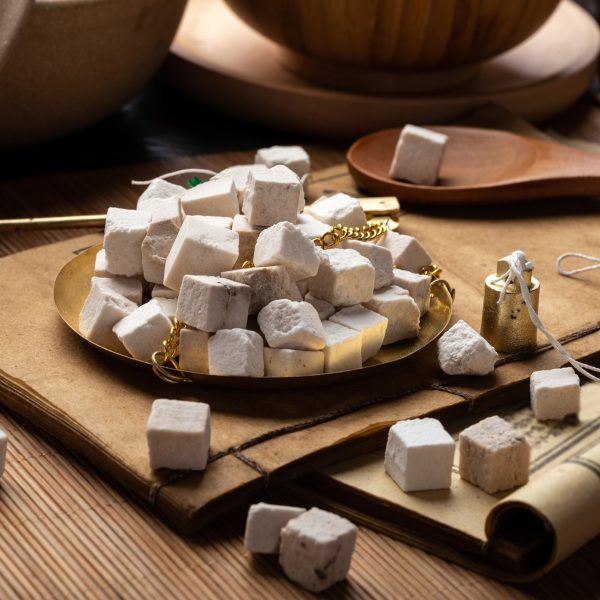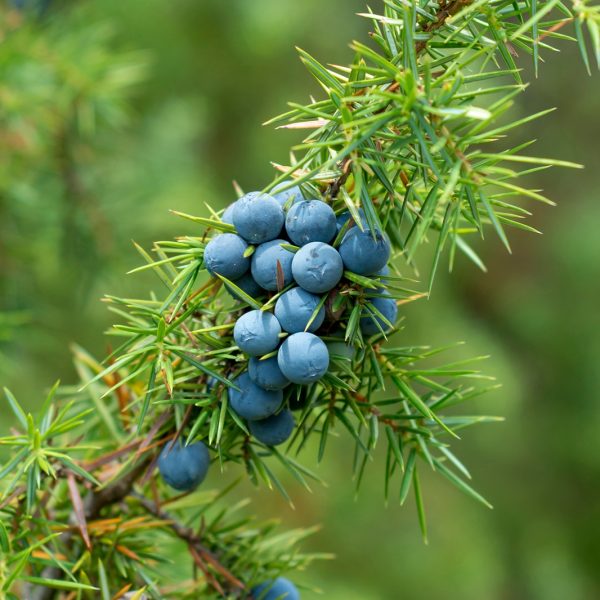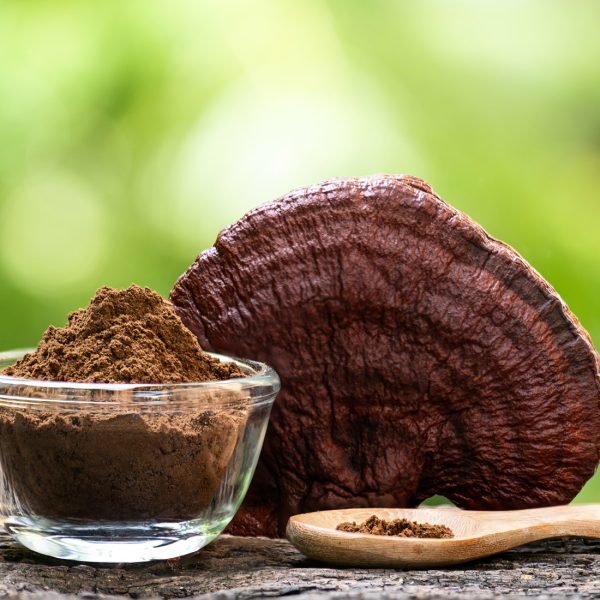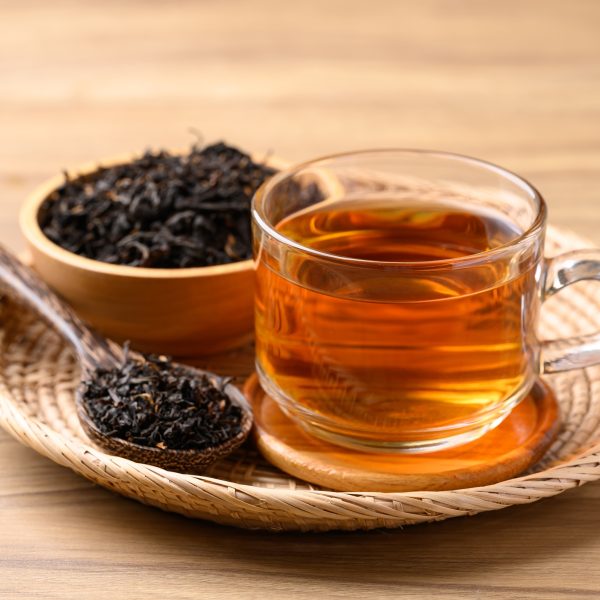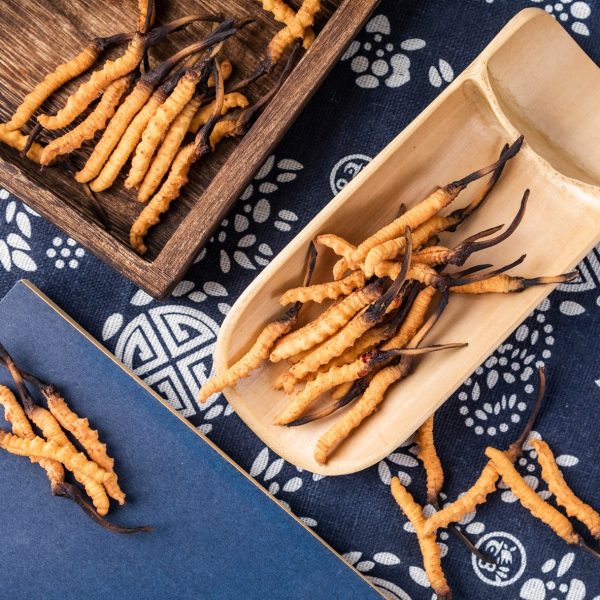-
How does it feel?
-
What can I use it for?

Tremella (Tremella fuciformis) Tremella is highly valued in traditional Chinese medicine (TCM) where it is used for a multitude of therapeutic applications. Some of its most well-known properties are to nourish the nervous system and for its beautifying effects.
As a jelly fungus, tremella can hold up to 500 times its weight in water. Just a single gram of tremella mushroom can hold 500 grams of fluid. These hydrating properties of tremella have been of much interest in the cosmetics industry, thus it is often used as a moisturising agent in cosmetic preparations.
Tremella is a nourishing superfood commonly eaten in Asian cuisine. It has now become popular as a medicinal fungi supplement the world round. It is both nourishing and nutritive and may be incorporated into a variety of recipes as a daily superfood to enhance overall health. Its traditional uses were as an anti-aging medicine as it has a number of properties that allow it to enhance skin and cellular health (5, 7).
As well as being hydrating to the skin cells, tremella is thought to improve the production of specific enzymes that help to maintain a healthy complexion (3). Tremella may be taken internally as a supplement for its beautifying and skin enhancing effects as well as to offset skin damage caused by lack of hydration. Tremella works to improve the elasticity of skin and reduce the visibility of fine lines and wrinkles (3).
-
Into the heart of tremella

Tremella mushroom sugar soup (Tremella fuciformis) Tremella has a deeply nourishing action upon the nervous system. It is rich in minerals and vitamins as well as having a moistening effect upon the tissues and skin. These combined qualities make it an excellent choice for deep debility and deficiency (7).
The tremella mushroom, or bai mu er (white wood ear) as it is known in traditional Chinese medicine (TCM), is a wonderfully nourishing, restorative herb with a long history of use, particularly in TCM dietary therapy.
Energetically sweet, bland and neutral — meaning it neither warms nor cools the body. Tremella is gently tonifying, suitable for young and old, all body constitutions and for regular consumption, making it an invaluable and popular kitchen medicinal. It is especially called upon during convalescence from chronic illness where it features in comforting, restorative — not to mention, tasty — soups.
It is therapeutically related to the lung and spleen channels and is a true tonic for the vital energy or ‘qi’ due to its ability to encourage circulation, strengthen the heart and invigorate the brain. Tremella nourishes, strengthens and harmonises the blood and the tissues (7).
As a moistening substance it is said to improve yin deficiency heat which often presents in the lungs. It is specifically given as a cough syrup for a specific type of lung heat that is accompanied with dryness. Tremella lubricates the respiratory tract and nourishes the lung tissue (7).
Tremella strengthens the vital energy and life force due to these multifarious therapeutic actions — this is often seen of herbs that deeply nourish the blood and the tissues. It also benefits the stomach, kidneys and nervous system (7). It is also a male tonic that can invigorate semen and improve sexual function (7).
The tissue state that is most often indicated for use of tremella is atrophy or dryness. Tremella is a choice medicine for this presentation due to its soothing, moistening and mucilaginous effects.
In TCM, the combination of sweet and bland properties in a herb also lends itself to an ability to generate body fluids. Bai mu er is renowned in the East for its brilliant moisturising capacity. Little wonder, then, that it has been employed as a beauty aid and therapeutic agent for the skin for millennia.
This strong lubricating action is also employed internally, where it primarily benefits the lung and stomach organ systems. In TCM, these organs are susceptible to fluid and yin depletion and here bai mu er is incorporated into the diet to help gently replenish these substances, restore lung and stomach organ function and balance in the body.
This ability to replenish fluids and yin and restore the body after illness are reflected in modern research applications for tremella in China, which have centred around its anti-aging properties and ability to reduce side effects from radiotherapy (8).
-
Traditional uses

Tremella on a tree (Tremella fuciformis) White wood ear fungus has a long history as an edible mushroom and herbal medicine in China and Japan and is one of the oldest recorded medicinal fungi in TCM, recorded in the Shen Nong Ben Cao (a Chinese book on agriculture and medicinal plants), in around 200CE. Traditional uses include alleviating heat in the body, moistening dryness, supporting brain health and as a beauty enhancer, particularly of the skin. Earlier sources also hold that it benefits the heart, kidneys and semen. These historical applications may well reflect its modern day usage in cardiovascular and neurological conditions (8). It is traditionally added to soups where it will have been soaked for several hours beforehand, then cooked until tender. A popular example being yin er lian zi tang/ lian zi bai mu er tang (white wood ear and Lotus seed soup); a very popular traditional Chinese soup sweetened with rock sugar that benefits the skin, calms the mind and promotes sleep.
It was traditionally used as a nutritive tonic for debility and nervous exhaustion as well as for its anti-aging properties. There is reference to use for reducing fevers and healing ulcers (7).
It was also used historically for weakness after childbirth, abnormal menstruation, dysentery, gastritis and constipation. Traditional references suggest that tremella was also used to remove freckles on the face if eaten regularly (7).
-
Traditional actions
Herbal actions describe therapeutic changes that occur in the body in response to taking a herb. These actions are used to express how a herb physiologically influences cells, tissues, organs or systems. Clinical observations are traditionally what have defined these actions: an increase in urine output, diuretic; improved wound healing, vulnerary; or a reduction in fever, antipyretic. These descriptors too have become a means to group herbs by their effects on the body — herbs with a nervine action have become the nervines, herbs with a bitter action are the bitters. Recognising herbs as members of these groups provides a preliminary familiarity with their mechanisms from which to then develop an understanding of their affinities and nuance and discern their clinical significance.
-
Traditional energetic actions
Herbal energetics are the descriptions Herbalists have given to plants, mushrooms, lichens, foods, and some minerals based on the direct experience of how they taste, feel, and work in the body. All traditional health systems use these principles to explain how the environment we live in and absorb, impacts our health. Find out more about traditional energetic actions in our article “An introduction to herbal energetics“.
Chinese energetics
-
What practitioners say

Tremella mushrooms (Tremella fuciformis) Nervous system
The polysaccharides in tremella have neuroprotective effects, partly due to their anti-inflammatory and antioxidant properties. Tremella may be useful as part of a restorative post-stroke approach and for supporting neurological health in Parkinson’s disease (4).
Tremella may also help to prevent senile degeneration of micro capillaries as well as maintain blood perfusion in the vital organs (4). A herbalist may combine tremella along with other nervous trophorestoratives, such as oat straw or lion’s mane mushroom as well as circulatory herbs that will help to improve blood perfusion to the brain tissue, such as saffron, gotu kola and rosemary. Both the herbal formula and treatment approach will be tailored to address the specific needs and constitution of the patient.
Immune system
Tremella is sometimes used alongside other herbs for white blood cell deficiency and has been shown to be supportive in the recovery from chemotherapy and radiation to help restore white blood cell count (7). A herbalist may incorporate tremella into a treatment approach alongside other herbs (i.e. antioxidants and lymphatics), lifestyle and nutritional supplementation to support and restore balanced immune function for patients undergoing treatment for cancer.
In China many polysaccharide-based products are used in conjunction with radiotherapy and chemotherapy to help counteract side effects and optimise the immune function (4, 7). See our Mushrooms for Cancer Care article for further information on the medicinal use of polysaccharide-rich fungi to support cancer patients.
Respiratory system
Tremella is nourishing and restorative to the lung tissue. In TCM, it is specifically indicated for the lung meridian. Tremella is indicated for dry conditions in the lungs such as chronic bronchitis (7). Tremella nourishes the lung tissues via its moistening mucilaginous quality. It is also understood to increase lysozyme (an antibacterial factor in the lungs) in bronchial secretions, which may help support the localised action against lung infections and inflammations (7).
Cardiovascular system
Tremella has a number of actions that allow it to support systemic cardiovascular health. It has been used traditionally for conditions such as for atherosclerosis, ateriosclerosis and abnormal clotting (7) alongside other herbs and diet and lifestyle changes.

Tremella mushroom close up (Tremella fuciformis) A herbalist may incorporate tremella into a formula for cardiovascular disease to help stimulate vascular endothelial cells and therefore vascular repair. It may be best suited to those with an atrophic or dry tissue state where a deep level of nourishment is required. Tremella has also been shown to stimulate haematogenesis (production of new blood cells) (4).
The anti-inflammatory and antioxidant effects of tremella’s polysaccharides also add to its supportive effect on the cardiovascular system (4). It may be used as part of a restorative approach in the treatment of coronary heart disease.
In TCM an extract is made using tremella among other herbs for blood deficiency conditions specifically to enhance recovery of red cell production in bone marrow (7).
Stomach yin deficiency
In TCM, the stomach is “the origin of fluids”. Where stomach function is impaired, the body (in particular, viscera such as the lungs that rely on adequate lubrication) may become depleted of fluids and, in time, yin energy. Conversely, a deficiency of yin or fluids in the stomach inhibits the proper functioning of this organ. Stomach yin deficiency commonly arises from irregular eating habits (the Chinese also hold that eating late at night, a yin time of day, depletes the stomach of yin), chronic stress, prolonged heat in the stomach owing to overconsumption of heating substances and as the sequelae of febrile disease. This pathological pattern may present with thirst, a dry mouth, dry stools, epigastric pain, emaciation and fivepalms heat — a sensation of heat in the chest, palms and soles.
Diet is a direct way to address this imbalance and bai mu er will often be added to soups for this purpose. For example:
- In a nourishing yin and qi tonic soup with da zao (jujube dates) and pork for convalescence after chronic illness.
- If there is five-palm heat it may be combined with di gu pi (lycium bark), mu dan pi (peony tree bark) and yin chai hu (stellaria root) to nourish yin and clear the heat deriving from its deficiency.
Lung yin deficiency
As mentioned, the lungs need adequate nourishment from yin and body fluids to function. Lung dryness precedes lung yin deficiency and manifests as a dry cough, dry skin (where skin is seen as the outward expression of the Lungs in TCM) and a dry throat. Lung yin deficiency is a more severe form of lung dryness, especially when accompanied with what we call deficient heat. Here, we will see typical signs of yin deficiency such as the five-palms heat, described above along with signs specific to a deficiency of yin and fluids in the lungs. The dryness of the membranes in the lungs combined with heat (which causes blood to move ‘recklessly’) as well as possible trauma from prolonged coughing may, in such cases, lead to consumptive cough — dry cough with blood-tinged sputum — one of the primary traditional therapeutic indications for this fungus. The underlying cause of lung yin deficiency is often that of stomach yin deficiency, making this an excellent medicinal for addressing both the ‘root’ and ‘branch’ of the disease.
Again, tremella will most commonly be prepared in a soup such as:
- Bai mu er, bai he (lily bulb) and sha shen (glehnia root) soup for consumption, coughing blood and lung abscess.
- Bai mu er and tai zi shen (pseudostellaria) soup, sweetened with rock candy for lung yin deficiency with weakness, palpitations and shortness of breath.
-
Research

Large Tremella mushroom (Tremella fuciformis) There are a limited number of clinical trials for tremella mushroom. However, there are a number of in vivo and in vitro studies on tremella extracts and its polysaccharides that demonstrate various bioactivities, including impaired memory repair, anti-inflammatory, hypoglycemic and hypocholesterolemic properties. Further studies have identified antioxidation, antitumor, antidiabetic, immunomodulatory and neuroprotective activity (3). Studies have demonstrated the role this extract may play in skin anti-aging, photoprotection, wound healing, and barrier protection. A number of these studies have been included below to demonstrate the mechanism of action for some of the medicinal actions of tremella discussed in this monograph (3).
Animal studies are not condoned by Herbal Reality, however, for the purpose of including research from which some understanding of therapeutic actions can be confirmed, some animal studies may be referenced herein.
Tremella fuciformis and Cognitive Impairment: A Randomised Controlled Trial
A randomised double blind controlled study was carried out to investigate the effects of tremella fungus on individuals with subjective cognitive impairment (SCI). Seventy-five individuals were randomised to receive with 600 mg or 1200 mg a day of tremella fungus or or placebo. The study demonstrated greater improvements in the total scores on the subjective memory complaint questionnaire as well as significant improvements in short-term memory and executive functions for those in the tremella group compared with those in the placebo group. The results demonstrate the safety and efficacy of tremella fungus in the treatment of subjective memory complaints and enhance cognition in individuals with SCI (1).
Purified tremella polysaccharides and their neuroprotective effects in vitro
An in vitro study was carried out to investigate the effects of purified polysaccharides from tremella against glutamate-induced cytotoxicity in differentiated PC12 (DPC12) cells (cells that are used to gain insight about diseases of the brain). The study showed that purified polysaccharides from tremella fungushave a neuro-protective effect against glutamate-induced DPC12 cell damage. The present study provides an experimental foundation supporting the efficacy of tremella polysaccharides as a potential therapeutic agent for neurodegenerative diseases (6).
-
Did you know?
Tremella fuciformis translates as trembling painted form: ‘tremell’ — trembling, ‘fuci’ — painted/ coloured, ‘formis’ — form.
Additional information
-
Botanical description
The fruit bodies of this jelly fungus are gelatinous, watery and white — translucent in appearance. It can vary in sizes of up to 7.5 centimetres (3 inches) across but will be larger in cultivated specimens. It is composed of thin but erect, seaweed-like, branching fronds, often crisped at the edges. Microscopically, the hyphae are clamped and occur in a dense gelatinous matrix.
Other species that may be commonly mistaken for tremella include Ductifera pululahuana, which is more glob-like and usually less translucent. Tremella reticulata is also sometimes mistaken for tremella and usually grows on the ground, features a branched, coral-like fruiting body and it is characterised by the presence of cruciate-septate phragmobasidia
-
Common names
- Snow fungus
- Japanese: shirokikurage / hakumokuji
- Chinese: bai mu er / yin er
- Snow ear
- Silver ear fungus
- Chrysanthemum mushroom
- Witches’ butter
- White jelly mushroom
- White tree jellyfish
-
Safety
Tremella is a safe medicine and is understood to be non toxic. However, due to insufficient data it is not recommended to use during pregnancy or breastfeeding.
-
Interactions
None known
-
Contraindications
None known
-
Preparations
- Paste
- Dried
- Decoction
-
Dosage
In TCM, tremella is taken by soaking around 3–4 grams for between 1–2 hours. It is then cooked down into a paste in an earthenware pot and eaten with sugar or mixed into a recipe (7).
It is common to take tremella in its powdered form mixed in with food such as in smoothies or broths.
Dried: Take up to 3.6g of dried cultured mycelium/ fruiting body per day.
Decoction: To make a decoction place 3g of dried material in one cup of boiling water, simmer gently for between 15–20 minutes. This should be drunk hot 3 times a day.
-
Plant parts used
- Fruiting bod
- Mycelium
-
Constituents
The major active phytochemicals in tremella are its polysaccharides which have been shown to have a wide range of effects.
Tremella also contains fatty acids, proteins, enzymes, polysaccharides, phenols, flavonoid, dietary fibre and trace minerals (6).

-
Habitat
Tremella is typically found on dead, attached or recently fallen branches of broadleaf trees. The species is mainly tropical and subtropical, but extends into temperate areas in Asia and North America.
-
Sustainability
The IUCN Red List of Threatened Plants database currently has no information on the sustainability status of tremella fungus.
Habitat loss and over-harvesting from the wild are two of the biggest threats faced by medicinal plant species. There are an increasing number of well-known herbal medicines at risk of extinction. We must therefore ensure that we source our medicines with sustainability in mind.
The herb supplement industry is growing at a rapid rate and until recent years a vast majority of medicinal plant produce in global trade was of unknown origin. There are some very real and urgent issues surrounding sustainability in the herb industry. These include environmental factors that affect the medicinal viability of herbs, the safety of the habitats that they are taken from and the welfare of workers in the trade.
The botanical supply chain efforts for improved visibility (transparency and traceability) into verifiably sustainable production sites around the world is now certificated through the emergence of credible international voluntary sustainability standards (VSS).
Read our article on Herbal quality & safety: What to know before you buy and Do you know where your herbs come from? to learn more about what to look for and questions to ask suppliers about sustainability.
-
Quality control
Hot water extraction is the most commonly used method in soluble neutral polysaccharide extraction from plants and fungi. Many use what is called a dual extraction method, which combines a decoction process with alcohol extraction. Making medicinal fungi preparations should be considered on the basis of each species, which may differ in methodology.
Herbal medicines are typically safe to take, however it is important to buy herbal medicines from a reputed supplier. Sometimes herbs bought from disreputable sources are contaminated, adulterated or substituted with incorrect plant matter.
Some important markers for quality to look for would becertified organic labelling, ensuring that the correct scientific/botanical name is used and that suppliers can provide information about the source of ingredients used in the product.
A supplier should be able to tell you where the herbs have come from. There is more space for contamination and adulteration when the supply chain is unknown.
-
How to grow
Tremella can be grown on logs using a spawn plug or grains. Most commercially produced tremella is grown in bags on blocks of supplemented hardwood sawdust substrate.
- Prepare the substrate by mixing sawdust with bran, or other agricultural waste. Cottonseed hull has been reported to give higher yields. Ensure a 65% water content in the substrate.
- Inoculate the substrate with generous amounts of the mother-culture spawn then placing the inoculated substrate in bags or another suitable semi permeable container and incubate at a suitable temperature for mycelial growth.
- Monitor growth every day and adjust the environment such as the temperature, moisture level, and light exposure for the growth as necessary.
-
Recipe
Tremella and cacao beauty balls
Ingredients
- 175g dates (weight after pitting)
- 60g cashews
- 40g raisins
- 20g raw cacao powder
- 12–15g of tremella powder
- 15g collagen (plant or bovine based)
Method
Place all ingredients into a food processor. The ingredients can be initially chopped by slowly pulsing a few times before processing into a dough. The mixture will start to come together into a smooth form.
The dough can be portioned into 25–30g balls and rolled in cacao powder. To keep these fresh store in an airtight container, lined with greaseproof paper in the fridge or a cool dark place. These can be eaten at three a day. Consume within two weeks.
-
References
- Ban, S., Lee, S. L., Jeong, H. S., Lim, S. M., Park, S., Hong, Y. S., & Kim, J. E. (2018). Efficacy and Safety of Tremella fuciformis in Individuals with Subjective Cognitive Impairment: A Randomized Controlled Trial. Journal of Medicinal Food, 21(4), 400–407. https://doi.org/10.1089/jmf.2017.4063
- Wu, Y., Wei, Z., Zhang, F., Linhardt, R. J., Sun, P., & Zhang, A. (2019). Structure, bioactivities and applications of the polysaccharides from Tremella fuciformis mushroom: A review. International Journal of Biological Macromolecules, 121, 1005–1010. https://doi.org/10.1016/j.ijbiomac.2018.10.117
- Mineroff, J., & Jagdeo, J. (2023). The potential cutaneous benefits of Tremella fuciformis. Archives of Dermatological Research. https://doi.org/10.1007/s00403-023-02550-4
- International Journal of Medicinal Mushrooms – Begell House Digital Library. (n.d.). www.dl.begellhouse.com. https://www.dl.begellhouse.com/journals/708ae68d64b17c52
- Ma, X., Yang, M., He, Y., Zhai, C., & Li, C. (2021). A review on the production, structure, bioactivities and applications of Tremella polysaccharides. International Journal of Immunopathology and Pharmacology, 35, 205873842110005. https://doi.org/10.1177/20587384211000541
- Tremella fuciformis – an overview | ScienceDirect Topics. (n.d.). Www.sciencedirect.com. Retrieved December 21, 2023, from https://www.sciencedirect.com/topics/biochemistry-genetics-and-molecular-biology/tremella-fuciformis#:~:text=Plenty%20of%20bioactive%20substances%20are
- Hobbs, C. (2003). Medicinal mushrooms : an exploration of tradition, healing, and culture. Botanica Press.
- Powell M. Medicinal Mushrooms: A Clinical Guide 2nd ed. Dorset: Caric Press, 2014.

